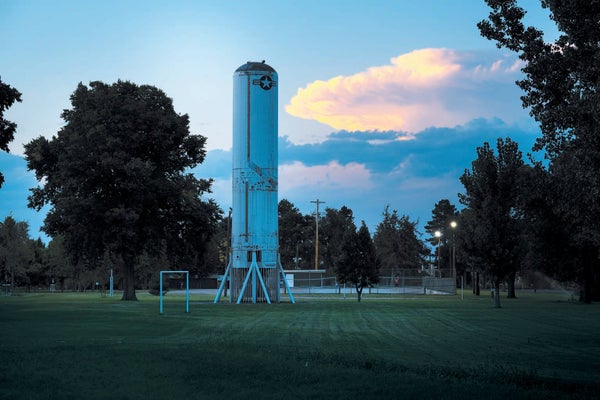This article is part of “The New Nuclear Age,” a special report on a $1.5-trillion effort to remake the American nuclear arsenal.
The point of the thing was to forever change our concept of power. When the U.S. military assembled a team of scientists, led by physicist J. Robert Oppenheimer, to build a nuclear bomb during World War II with the hope of beating the Nazis to such a terrible creation, many of those involved saw their efforts as a strange kind of civic destiny. The Manhattan Project, wrote Richard Rhodes, Pulitzer-winning author of The Making of the Atomic Bomb, was “compelled from the beginning not by malice or hatred but by hope for a better world.” Oppenheimer himself once said, “The atomic bomb was the turn of the screw. It made the prospect of future war unendurable. It has led us up those last few steps to the mountain pass; and beyond there is a different country.”
We live in that different country now, one in which it is assumed that the presence of nuclear weapons makes their use impossible. If one nation strikes, the thinking goes, we are all obliterated.
As recently as 15 years ago, the sentiment of nonproliferation seemed durable. Even American secretaries of state who held office during the cold war were advocating for the final drawdown of atomic weapons. Former president Barack Obama, when he took office in 2009, wanted a world without them and pushed a new treaty with Russia to limit the number of deployed warheads in each country's arsenal. But after decades of efforts to disarm global powers and reduce tensions, the screw is now tightening again. Russia has suspended its participation in the treaty, and it's believed that China is increasing the size of its arsenal.
And even while the U.S. was preparing to draw down its total number of nuclear warheads, it sought to replace its existing weapons and modernize its delivery mechanisms. The weapons, which had been designed decades ago, were aging, and their upkeep cost hundreds of millions of dollars a year. In 2010 Congress authorized an update to the U.S. nuclear triad, the weapons systems deployable by land, sea and air.
No leg of the triad is as controversial as the intercontinental ballistic missile (ICBM) system, the arsenal of hundreds of weapons spread across 450 underground silos in Montana, North Dakota, Wyoming, Colorado and Nebraska. Because the missiles sit in fixed locations—unlike submarines or aircraft—they are seen as potentially vulnerable to attack; because they are considered first-strike weapons, concerns linger that one could be inadvertently launched; because of their geographic sprawl, they have an outsize impact on land use and energy policy. In 2015, two years before General James Mattis was confirmed as U.S. secretary of defense, he suggested to the Senate Armed Services Committee that the military consider removing land-based missiles altogether.
But around the same time, the Air Force Nuclear Weapons Center requested the design and construction of a new missile. The contractor Northrop Grumman bid on it and won, and by 2021 Congress had authorized the first investments in an updated nationwide ICBM system, which is now called Sentinel. Like the Minuteman III missiles currently in the ground, the Sentinel missiles will be capable of making a graceful parabolic arc through the heavens to any place on Earth in order to destroy it. The $100 billion that will go to Sentinel represents only the first step of what is anticipated to be a $1.5-trillion investment in the triad, all of which is predicated on ramping up production of new plutonium pits, the deadly metallic hearts of nuclear warheads.
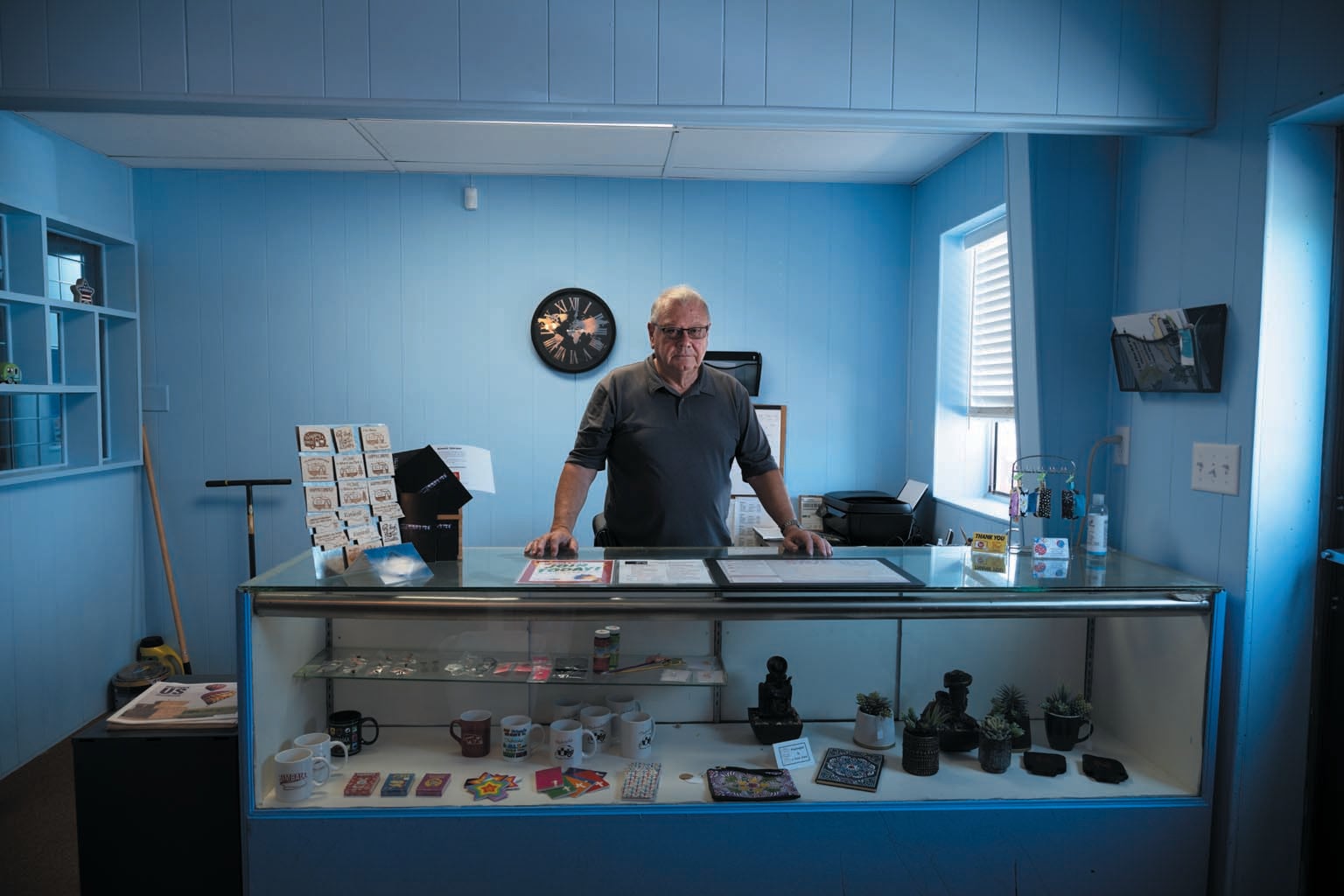
Whether the U.S. is turning the screw a little tighter to assure allies in the wake of Russia's newly aggressive stance and rising Chinese power or merely furthering a profitable, decades-old militarized political agenda depends on whom you ask. Either way, the upshot is clear. “I expect the coming decades are going to be a boom time for the nuclear weapons industry,” says Jeffrey Lewis, a nonproliferation expert and professor at the Middlebury Institute of International Studies at Monterey, Calif.
Robert Webster, deputy director of weapons at Los Alamos National Laboratory in New Mexico, told me that Americans have lost their fluency in nuclear weapons—that is, because of decades of relative stability, we've forgotten how to think about them. “You need everybody in the world to be on the same level of understanding so you can maintain this deterrence,” he says. But global powers treat nuclear weapons as bargaining chips, and history shows that one country's escalation follows its rivals'. The worst-case scenario is apocalyptic. Even if an uneasy peace persists, we know from experience that a nuclear buildup—warhead production and the radioactive shadow it leaves behind—changes a place. “There's a cost of entry to being a nuclear country,” Webster says.
It may be more accurate to say there are many costs to entry, both immediate and lasting. Since the advent of plutonium production, less than a century ago, some parts of the U.S. have borne more of those costs than others. This past summer I drove to the city that's still making the weapons it was supposed to eradicate the need for; to the plains where nuclear missiles control local economies; to a mine 2,000 feet underneath the desert floor where much of America's plutonium waste from weapons production goes to rest. My hope was to hear from people who live in those communities to better understand where that era has left them as we teeter on the edge of a new arms race. The tour started an hour away from my house, at the birthplace and spiritual home of America's nuclear weapons. “Los Alamos,” says a sign at the edge of town, “where discoveries are made!”
LOS ALAMOS NATIONAL LAB, N.M.—The place looks staged, like a film set designed to represent a badly aging American suburb: the neat tan buildings, the security gates, the white domes resembling circus tents that house vessels full of plutonium waste. On a mesa backdropped by the Jemez Mountains, the place now known as Los Alamos National Laboratory (LANL) and the surrounding town were created during World War II, when the government acquired a boys' school and land from homesteaders and Indigenous people on the Pajarito Plateau. The plateau sits above steep canyons and arroyos that plummet to the valley floor and the Rio Grande, New Mexico's primary artery.
According to Raymond Martinez, director of the Department of Environmental and Cultural Preservation at the Pueblo de San Ildefonso, which borders the lab, the tribe provided the government land for the war effort, with an understanding: “As far as our knowledge and our history that has been shared with us, and the information that we have found so far, once the project was done, the land was supposed to be returned,” he said.
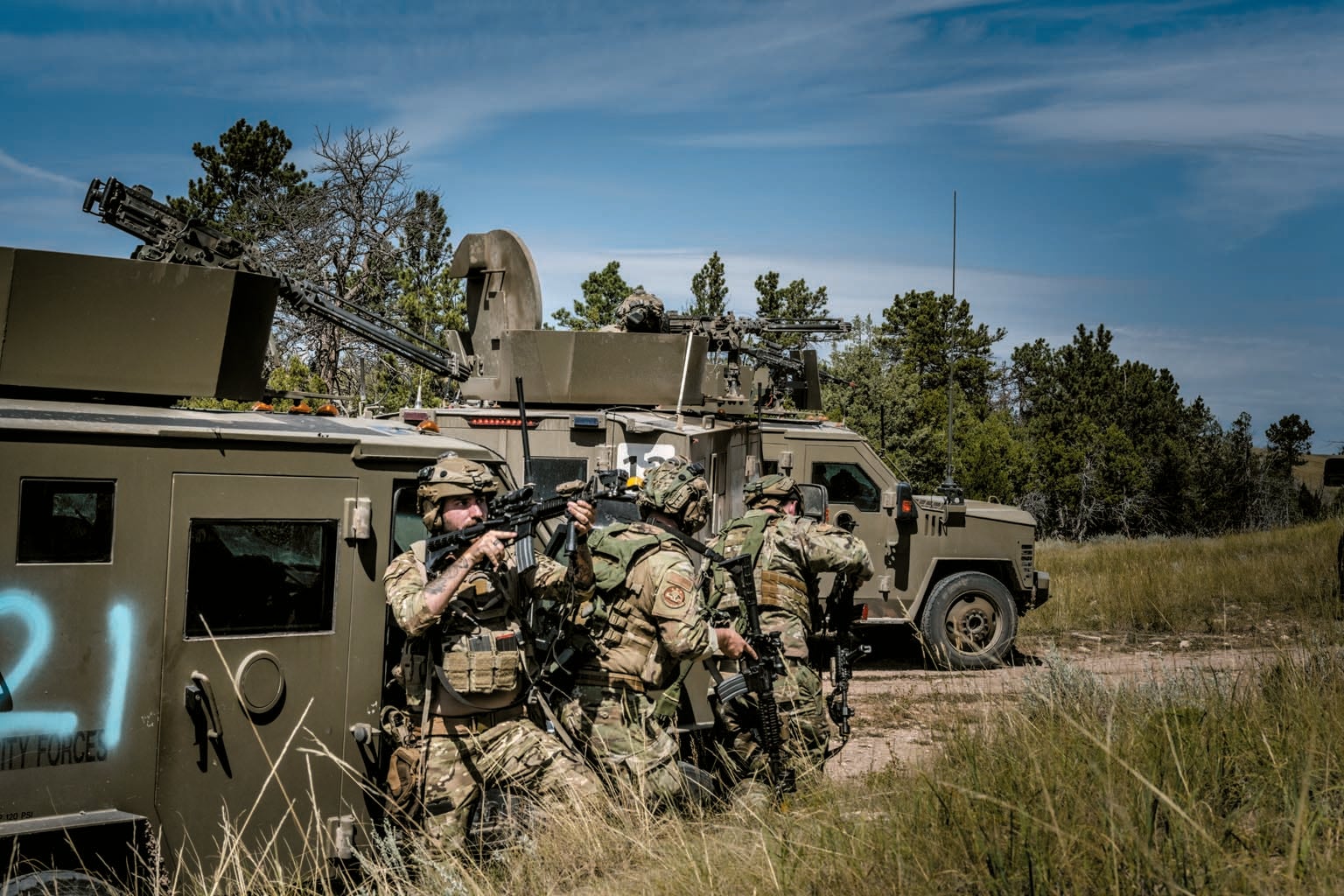
The Jemez are rounded, volcanic mountains, and they are full of life. There are elk and bear, kestrels and ravens, tall grasses and deer, and trout in deep, cool pools. It is a place where Indigenous peoples have come for millennia to hunt, fish, harvest wood and plants, and pray. In his 1976 memoir The Names, N. Scott Momaday, the Pulitzer-winning Kiowa author, recalled years he spent in the Jemez Pueblo as a boy: “Now as I look back on that long landscape of the Jemez Valley, it seems to me that I have seen much of the world.”
What Oppenheimer saw on the mesa underneath the Jemez Mountains was a place where scientists could develop a weapon in secret. Early on, citizens of nearby pueblos helped to construct the town and worked as housekeepers for scientists. During World War II, LANL received uranium and plutonium from reactors at Oak Ridge, Tenn., and Hanford Engineer Works in Washington State, where the first full-scale nuclear reactor opened in 1944. The following summer bombers dropped two payloads on Japan: a uranium bomb, Little Boy, over Hiroshima and a plutonium device, Fat Man, over Nagasaki. That fall Oppenheimer resigned from LANL and was replaced by Norris Bradbury, who believed the lab needed to stay open to develop weapons as a deterrent. Even as Los Alamos widened its focus in the subsequent decades, becoming a home for climate science and nanotechnology research, it continued to create detonators for nuclear weapons.
At the height of the cold war the U.S. manufactured more than 1,000 plutonium pits a year, most of them at the Rocky Flats Plant in Colorado. The source uranium for those pits was scraped from the ground in mines in the Southwest, hundreds of them on Navajo Nation lands. In 1989 the Rocky Flats Plant was raided by the Federal Bureau of Investigation after numerous safety and reporting violations. The plant was shuttered; the surrounding land is now a wildlife refuge abutted by a sleek housing development.
After the closure of Rocky Flats, in 2003 LANL once again veered back into war-reserve pit production. It was soon tasked with making a limited number of pits for submarines, but that project was scuttled when it was revealed that scientists had put a number of pits side by side for the purpose of taking a photograph—a scenario that, hypothetically, could lead to a critical nuclear reaction.
Today there are an estimated 20,000 vintage pits in storage, many of them held in a plant in Texas called Pantex that disassembles, stores and reassembles old weapons. Whether those pits retain their efficacy is a matter of consequential debate. Plutonium production from uranium began only 80 years ago, and testing of nuclear weapons in the U.S. has been discontinued since the 1990s. “We're kind of studying the aging as the experiment happens,” Webster says.
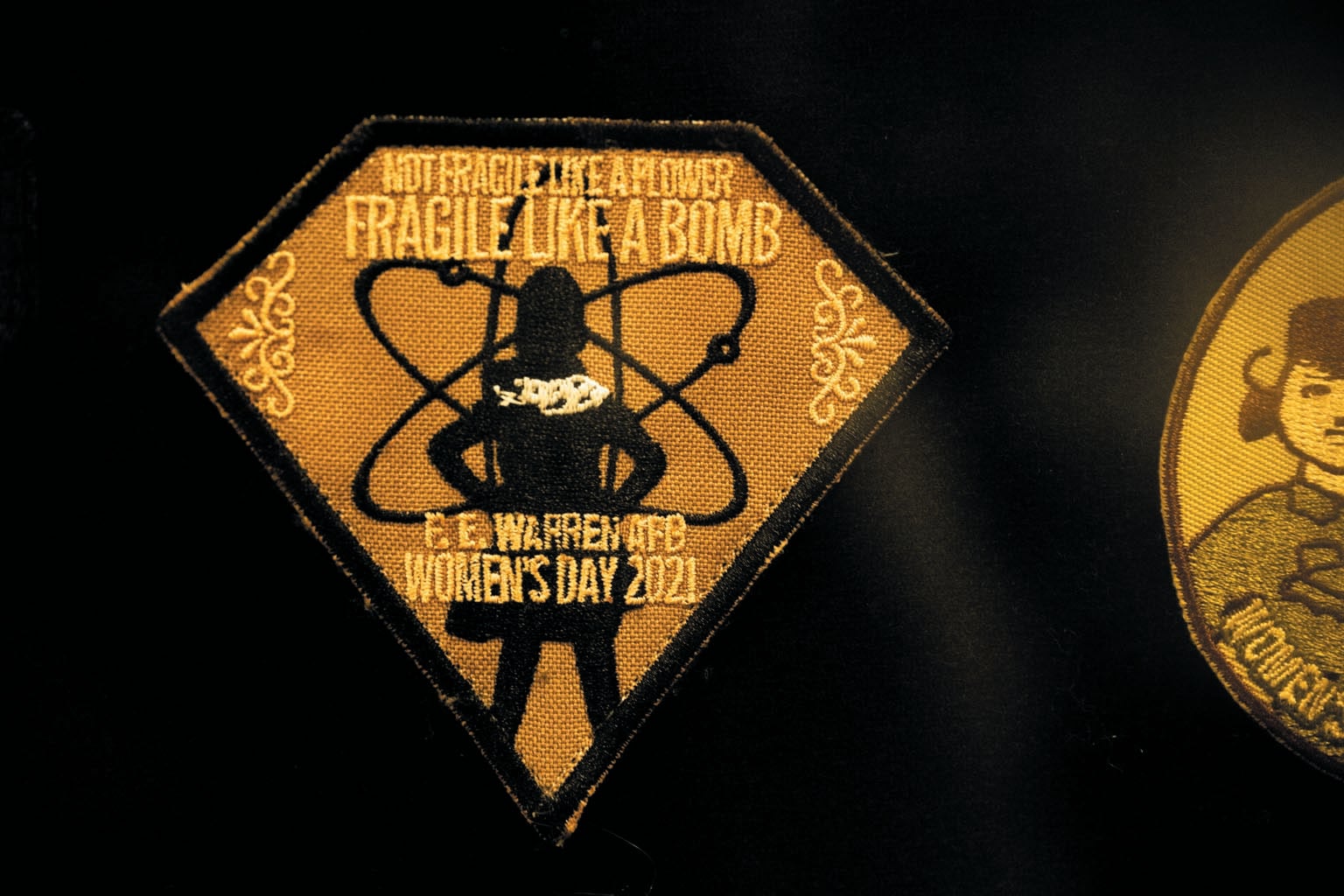
Some studies have suggested that America's stockpiled pits will probably remain effective for a long time. “As far as we can tell, scientifically, there's no justification for needing to make new pits at the rate [the government] is proposing,” says Dylan Spaulding, a senior scientist in the global security program at the Union of Concerned Scientists, who has done research at both LANL and Lawrence Livermore National Laboratory in California. Lewis of Middlebury's Institute of International Studies said the decision to update the arsenal is political and economic in nature: “We don't need the new ICBM.”
But the National Nuclear Security Administration (NNSA) contends that this update is necessary to prevent decay and to maintain institutional expertise should a war effort become urgent. The U.S. Air Force maintains that updating the ICBM system is less expensive than paying to continue extending the life of the Minuteman III.
In 2018 LANL was told to get ready to produce 30 war-reserve-ready plutonium pits a year by 2026. (A new facility in South Carolina, under construction, will eventually contribute at least 50 plutonium pits a year.) Those will be made with recycled plutonium atoms sourced from Pantex's vintage stash of weapons and inserted into a warhead designed with new components. It marks the first time since the end of the cold war that the nation is manufacturing such a warhead, called the W87-1, which will be affixed to the end of the new Sentinel missiles.
To support the production of new plutonium pits, the annual budget for Los Alamos's nuclear weapons program and related construction has recently swelled to $3.5 billion—more than one-third the size of New Mexico's state budget. Webster says his team is hoping to produce its first war-reserve pit next year, but according to the Government Accountability Office, the project is behind schedule. The lab is planning to hire 1,400 workers, and the city is looking to find housing for them at a time when an influx of wealthy residents has reshaped the economic terrain of northern New Mexico. The county of Los Alamos, which has a median household income above $100,000, boasts that its residents “have the highest per-capita levels of educational attainment of any community anywhere.”
Even as the new project begins, surrounding communities, many of which experience entrenched poverty, are still dealing with consequences from decades earlier. Back during the Manhattan Project, when there was scant environmental regulation, workers often dumped radioactive waste directly in the ground. At a former nuclear research center called Area C, for instance, there are still chemicals, including plutonium, uranium and tritium, in unlined shafts and pits from the Manhattan Project.
Elsewhere at Los Alamos the Department of Energy has committed to exhuming and removing the radioactive material and contaminated soils. But at Area C the DOE has proposed a cleanup strategy called “cap and cover” that keeps the waste in the ground. The state has objected. “We asked them to excavate the waste, sort it and dispose of it properly,” says Neelam Dhawan, an environmental specialist with the New Mexico Environment Department's hazardous waste bureau.
Webster has maintained that the new production of pits will be safer than the last go-round, given what we now know about nuclear waste. Los Alamos is repeatedly inspected by the Defense Nuclear Facilities Safety Board, an oversight agency, which has found numerous protocol and safety breaches. A report from September 8, 2023, said technicians found radioactive material on a worker's protective bootie. Later that month electrical contract workers were exposed to hazardous beryllium dust while replacing lights. In 2020 a lab worker inhaled plutonium oxide powder—a terrifying prospect. This past May an NNSA investigation found that the lab's primary contractor in pit production, Triad National Security, had been negligent with safety protocols; the NNSA fined the contractor but still funnels billions of dollars in public money its way.
Webster disputes the idea that the lab has become less safe. Rather, he says, “we are seeing increased reporting of incidents,” and he characterizes that as indicative of robust transparency. But for a state dealing with the long shadow of nuclear weapons, that's only so reassuring. “The nuclear industry has left New Mexico in a vulnerable position,” says James Kenney, secretary of the New Mexico Environment Department. “Until we do right by those who are most impacted, we're not going to have the social license as a federal government or a state government to move forward.”
F. E. WARREN AIR FORCE BASE, CHEYENNE, WYO., AND KIMBALL, NEB.—In western Nebraska, people like their nukes. In 1968 civic leaders in Kimball, the so-called missile center of the world, sought one from the U.S. Air Force to display in its town park. They received a Titan, a precursor to the Minuteman. A local newspaper rhapsodized: “The community erected a huge missile in one of its parks to show people it wasn't kidding.”
At the time Kimball was booming thanks to investments in nearby missile silos at F. E. Warren Air Force Base, located just outside Cheyenne, Wyo. But since 1970 Kimball County has shrunk from 6,000 people to about 3,300. John Morrison, Kimball's mayor, who owns a gas station and an RV park in town, told me he is hoping for a surge of people and business from the Sentinel project: Warren is the first of three air force bases that will receive the Sentinel missiles, and Northrop Grumman is designing an elaborate new command center here. It'll be the nerve center of an ICBM system connected by a webbed system of transmission lines.
The 53-year-old Minuteman missiles remain operational. But some years from now, the first Sentinel missile will arrive at Warren and will likely be loaded onto a containment vessel. This so-called transporter erector will back up to a flat place in a field, probably in the vicinity of a farm. Fencing surrounds the place; underneath the ground, there is a silo. The airmen operating the erector will use hydraulics to tilt it toward the skies, and the brand-new missile will slip into the ground, where it will await the arrival of its warhead.
Given the location of the silos, it's possible to think of the missiles as deadly seeds spread across the prairie. But the people who operate them see them differently. “We call it a parent and a child,” says Major Cory Seaton, a 33-year-old missileer at Warren. The child is the launch facility, including the silo and the missile itself; the parents are the missileers sitting about eight stories underground at a distant missile alert facility, inside a capsule containing three switches and a key that, when turned simultaneously, launch a nuclear strike.
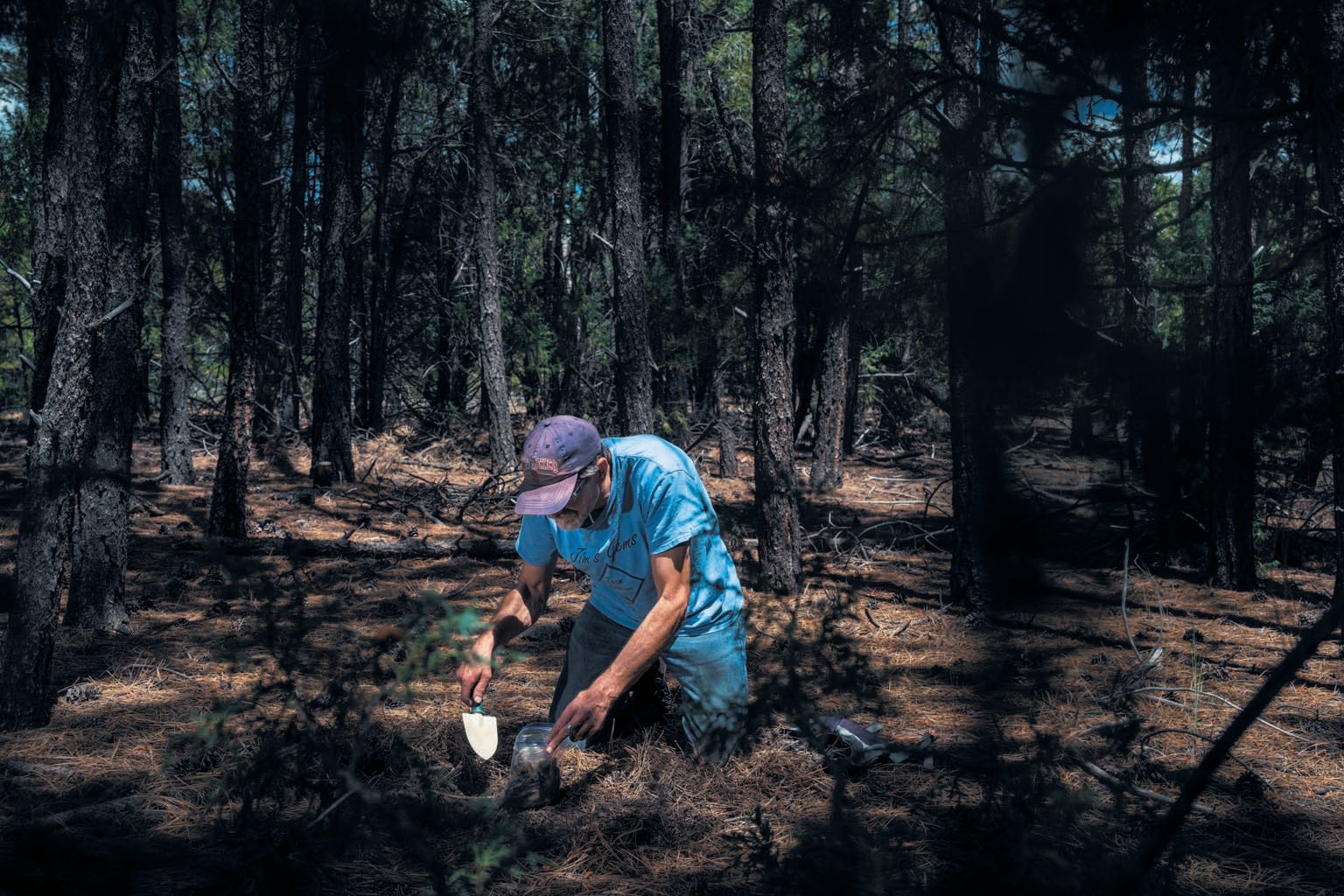
The missileers I met at Warren were young. There was Second Lieutenant Gavin Jones, 23 years old with a baby face; he'd joined to get college paid for and because he liked structure in his life. Too many of his friends lacked direction, he said. He worked with First Lieutenant Joshua Wuthrich, 28 years old, who “wanted to do something with meaning,” he said. Wuthrich had become interested in the work when he learned about Hiroshima as a child. “It stopped the war in two days,” he said. “The more I learned, the more I liked it.”
Much of the missileers' work involves security checks and maintenance; there's a constant need for them in these 60-year-old facilities. The equipment inside the cramped capsules is old, too—there are square monitors, the type of knobs you see in Sean Connery James Bond films, and a rotary phone. The air force base just transitioned data from years' worth of nuclear missile maintenance and checks off floppy disks.
Outside, past a heavy steel door, is an equipment room with two rumbling diesel generators, one of which featured an intake vent covered in duct tape. Graffiti art covered the walls outside the capsule: images of missileers golfing, nature scenes, a memorial to Kobe Bryant. Past a blast-proof door, a freight elevator led back to the surface of the earth. On the elevator shaft, someone had drawn murals reminiscent of the postapocalyptic video game Fallout. One read, “Be aware of the nuclear wasteland!”
Earlier this year it was revealed that more than 100 missileers in Montana have developed cancer, including rare forms such as non-Hodgkin's lymphoma. In response to the revelations, the air force ordered a cleanup of missile alert facilities in Montana that have been shown to contain polychlorinated biphenyls, or PCBs—toxic chemicals believed to have accumulated on equipment inside the poorly ventilated capsules. According to an air force spokesperson, 17 samples taken at Warren tested positive for PCB, but all were below acceptable levels. The air force is still testing for PCBs and other potential hazards there.
The air force is not digging any new silos, but it does plan to redesign the old ones. The current silos descend as deep as 90 feet underground and have concrete casings—features designed to help the nukes withstand a potential enemy attack. But the new silos will be closer to the surface and will have less armor. (Northrop Grumman, which has a $13.3-billion government contract to design the Sentinel missile and related infrastructure, did not release further details.) When the first silos were dug, their precise locations were a secret. That's no longer the case; Russia and China know where they are.
As an added layer of security, the military is using a new, high-performance helicopter, the Boeing Grey Wolf, to be able to swiftly respond to any threats to missile silos. The Grey Wolf is said to be 50 percent faster than its predecessor. But it has been locally controversial.
Warren's silos alone cover nearly 10,000 square miles in Wyoming, Nebraska and northern Colorado. For years wind-energy companies had been looking to develop projects near missile silo farms in Nebraska. Air force regulations held that any turbines need to be located at least 1,200 feet from silos, and the companies had drawn up plans accordingly. But the air force recently extended this setback to 2.3 miles out of concern that rotating turbines might interfere with the new helicopters. That change has greatly reduced the size of what would have been Nebraska's largest wind-energy project. “They say this is a necessary thing to protect our country,” says Jim Young, a longtime farmer and landowner in western Nebraska, who supports the wind project because it would reduce property taxes. “Depends if you believe that or not.”
Northrop Grumman is planning to build a live-in camp for around 2,500 workers who will revamp the transmission infrastructure needed to rewire and reconnect Warren's 150 silos. The incoming workers, however, aren't expected to be permanent. Mayor Morrison is aware of the reputation of such workers—temporary “man camps” have been associated with increased crime—and says Kimball has already bumped up funding for law enforcement.
But Morrison expresses no hesitation about the project. Maybe it will even result in a new missile in the town park. The old Titan stood for decades until someone from the air force showed up in the early 1990s to remove its upper half, out of concern that it might be emitting radiation. A new tip was affixed but poorly, and a wind event later brought it crashing to the ground. Pigeons roosted inside the exposed shaft. “Quite a bit of pigeon poop had gotten into there,” Morrison says. The community took the Titan down this past September. Morrison initially wanted to replace it with both a Minuteman and a Sentinel, but he had been told that might entail too much radiation.
RIO GRANDE VALLEY, N.M.—New Mexico has incredible green chile, world-class elk hunting and sporadic bursts of open political graft. It's also known for its spectacular billboards. Casinos promote maturing rockers, and Albuquerque features a veritable ecosystem of personal-injury attorney ads. In the 1990s people traveling through the state were treated to a sign funded by an activist group that read: “WELCOME TO NEW MEXICO, AMERICA'S NUCLEAR WEAPONS COLONY.” Drive around the communities near Los Alamos these days, though, and you'll see the lab's own messaging campaign. This summer one billboard showed a smiling young woman in a lab coat with gloves. “Radiation Control Technicians Are Vital to Operations at LANL,” it read, next to a promotion for a job-training program at Northern New Mexico College.
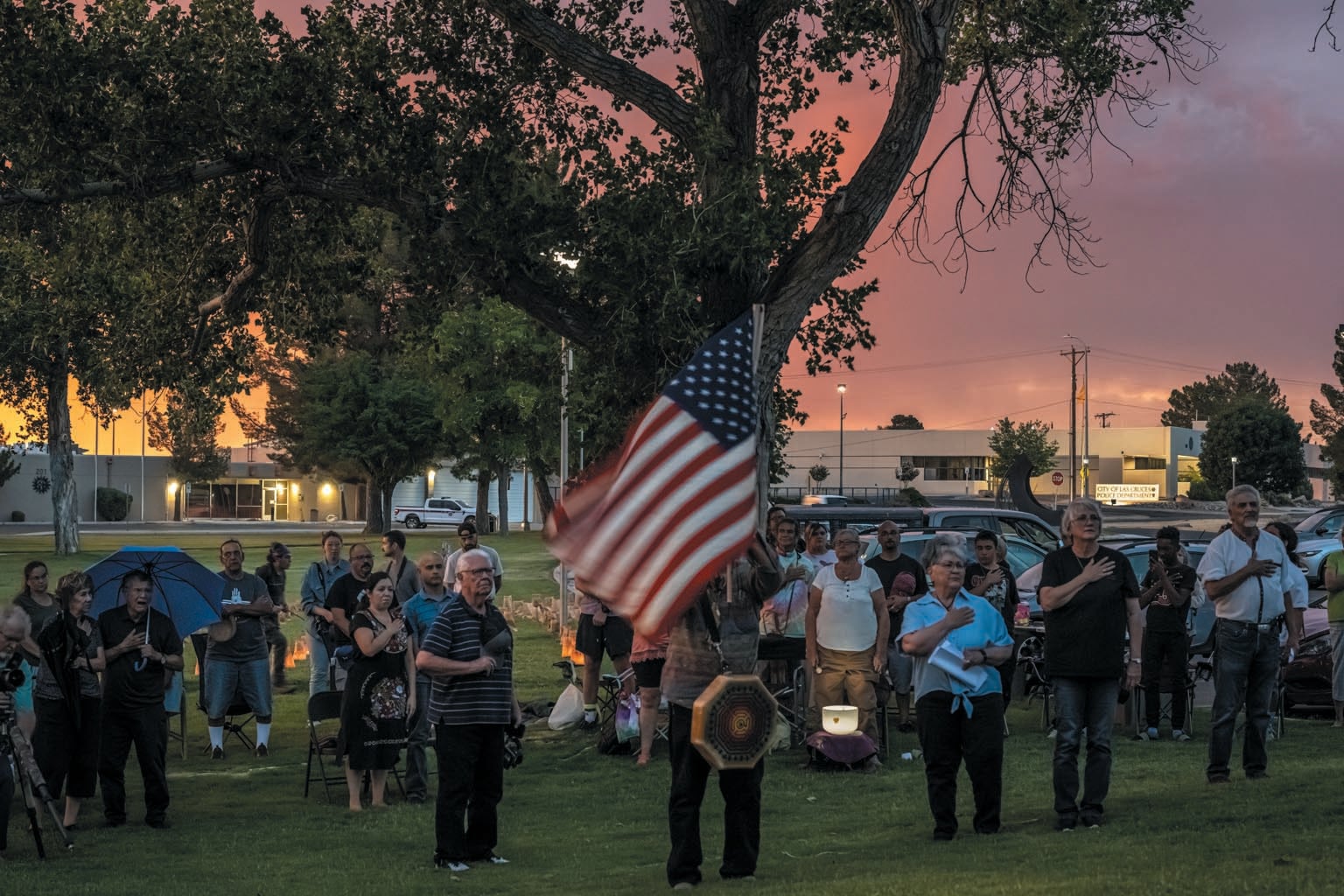
I passed by it in June while driving to Moving Arts Española on Ohkay Owingeh Pueblo. Inside, about 20 people had gathered to discuss how the government would clean up radioactive and chemical waste at Los Alamos. Under a wall display of masks, cooks served tostadas with fresh salsa. Michael Mikolanis, who manages the field office at Los Alamos for the DOE's Office of Environmental Management, stood out for his jacket and tie and a conspicuously big turquoise bracelet.
Mikolanis studied nuclear engineering in college and served on a nuclear submarine in the U.S. Navy before eventually pivoting to a career of cleaning up nuclear waste. Two years ago he was sent to New Mexico, where he is tasked with improving a complicated relationship between Oppenheimer's city on the hill and neighboring communities. As journalist Alicia Inez Guzmán, who grew up nearby, put it in a recent article for Searchlight New Mexico, “There's a kind of mental acrobatics required to compartmentalize these different realities—the opportunity and the harm, the secrets and the consent.”
For nearly two decades Los Alamos used hexavalent chromium to prevent scaling in water-cooling towers at a power plant that supplied the lab. The chemical is toxic and is thought to cause cancer when ingested. Often the lab just flushed the hexavalent chromium down canyons toward the Rio Grande, and in 2004 scientists reported that it had leached deep into the ground. It is now in the aquifer's groundwater, and although a monitoring well on the Pueblo de San Ildefonso hasn't shown evidence of contamination, the plume is awfully close. “We don't have a very good understanding of where it dripped into the aquifer,” Dhawan says.
To mitigate the underground plume, the DOE spent $120 million on monitoring and treatment systems; extraction wells that remove contaminated water; and injection wells that send treated water back into the ground. But the New Mexico Environment Department has expressed concern that the injections of clean water could move the plume toward San Ildefonso. The DOE has temporarily paused some of the injections. There are plans to drill another monitoring well. Meanwhile the plume creeps.
Then there's the radioactive material from the Manhattan Project and the cold war—what the DOE calls “legacy waste,” which is found at old weapons-development sites. It rains a lot in New Mexico during the summer—enough to cause flash flooding and to reshape arroyos; a 1999 study by scientists from Los Alamos found evidence of unnatural plutonium and uranium levels in the bed of Cochiti Lake, downstream, on the Pueblo de Cochiti. To prevent storm runoff from carrying plutonium and other radioactive waste to the Rio Grande, the government constructed weirs to redirect rainstorms into catchment and monitoring zones at human-made wetlands in 2000.
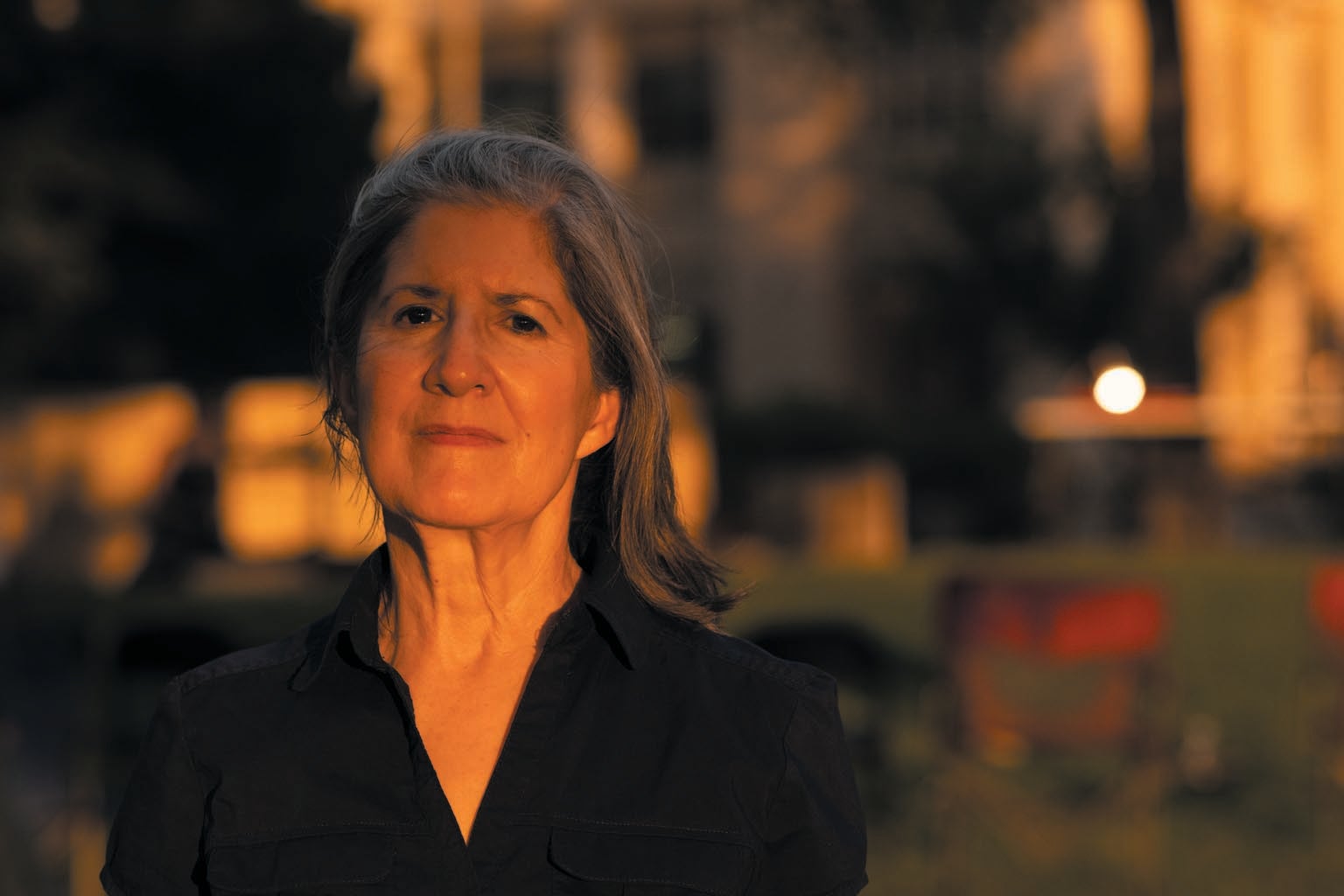
Over dinner, Mikolanis spoke rapid-fire about taking out a “loan of trust” and wanting to improve transparency. He acknowledged that the government has earned skepticism from local communities, but he still needed to project assurance. He noted to me that the plutonium found in Cochiti Lake was “1,000 times below levels that would generally trigger cleanup for radiological concerns” and suggested that the uranium found there might have come from a nearby mine. Regarding the risk of extreme weather, he said, “a number of controls and measures are put in place” to keep contaminants secure. Fully harnessing a monsoon, though, is like extinguishing a megafire, another attendant threat to Los Alamos: it's not possible.
Los Alamos has long downplayed concerns about undiscovered contamination, trying to assure local communities that all the legacy waste from the Manhattan Project era has been identified. In 2020, however, construction workers digging a sewer came across a previously unidentified disposal area that was revealed to contain plutonium and uranium. What's important, Mikolanis emphasized, is that he promptly and frankly communicated about it to neighboring communities and nations. “That transparency, that accountability, should still earn their trust,” he said, “because things will happen.”
After dinner, Mikolanis and his colleagues spoke for nearly an hour, giving an overview of the cleanup projects at hand. The room was dark, so attendees had trouble making out both the slides and a handout covered in acronyms. Then we were asked to move to breakout tables, where, for 10 minutes at a time, staffers asked pointed questions about the priorities of the constituents. It was basically speed-dating but for nuclear-waste mitigation.
I sat with Kathy Wan Povi Sanchez, an Elder from San Ildefonso Pueblo and a co-founding mother of Tewa Women United. She wore her silver hair swept back and a KN95 mask hanging from a beaded necklace. Her first match was Mike Narkter, a communications official for a subcontractor that works for another contractor that receives $230 million a year for the legacy waste cleanup. Narkter asked what her priority was.
“I guess being a dual citizen,” Sanchez said, “I think it's not so much prioritizing.” She gave him a history lesson—about the neglect of those who made the bomb, about the disrespect to cultural sites, about the waste creeping toward land her people had tended since time immemorial. “Nothing that is put in the ground stays immobile,” she said. She noted the publicly funded vocational program at Northern New Mexico College to train workers to handle radioactive waste—the subject of the new billboard advertisements. “To me that's not valuing the cultural aspect of a person to choose what will be a sustainable way of being tied to the land base that they come from.”
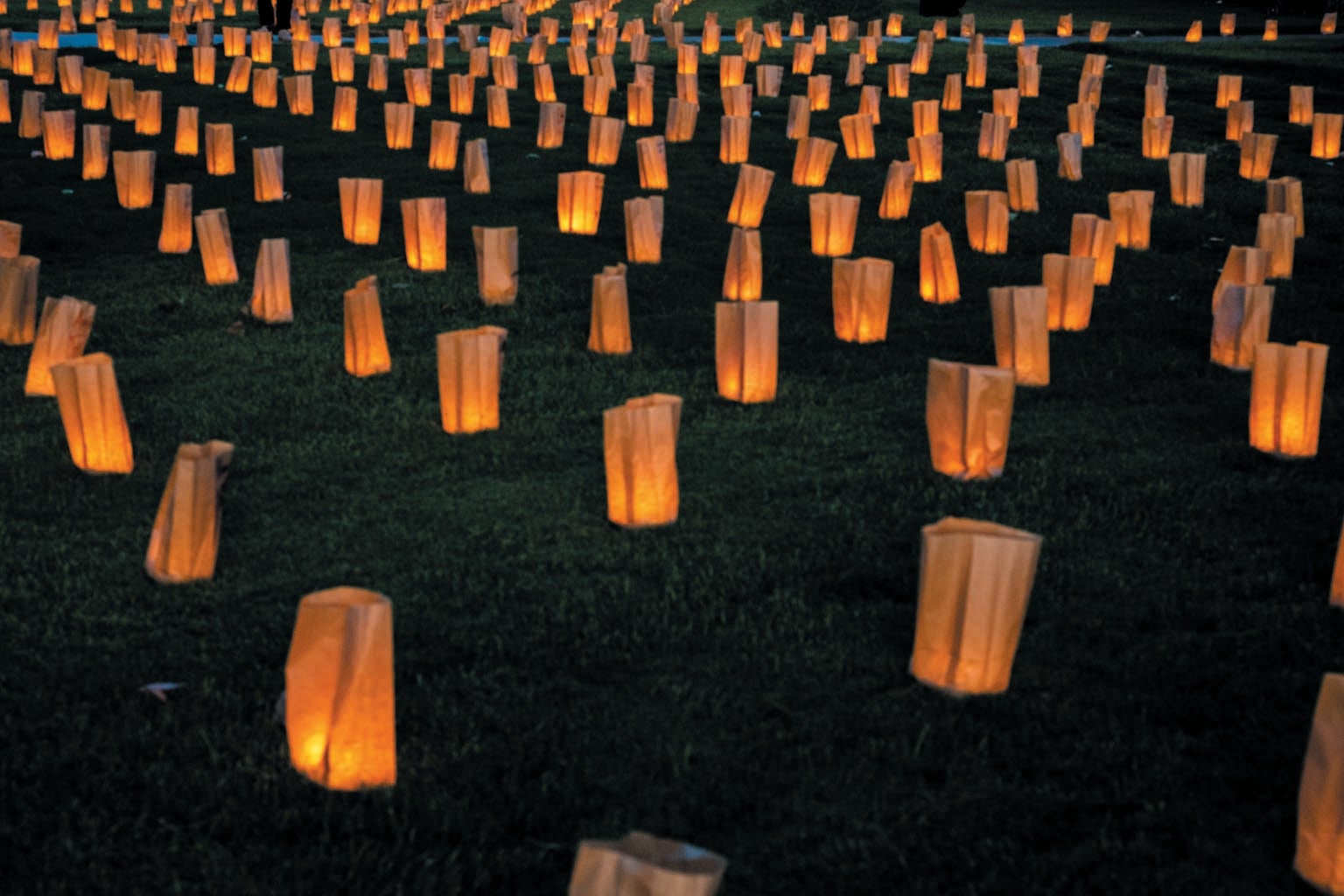
Among the most heavily guarded facilities at Los Alamos is a region called Area G, which is close to San Ildefonso tribal lands. Here lab workers manage and dispose of plutonium lingering from decades ago. Liquid waste produced during the processing of plutonium has been entombed in cement that is encased in corrugated metal piping. In one of the white domes, a massive conveyer belt runs the piping toward a device that slices it into manageably sized pieces. It looks like the world's biggest cigar cutter. Sanchez said the removal of these plugs wasn't enough. “Just because they dug it up, sent out that cement canister thing, doesn't mean the land around there has been remediated.” She asked Narkter if she was making sense, and he allowed that it was “a lot to unpack.” A buzzer sounded. Time was up.
Narkter moved to another table, and a woman named Sarah Chandler came to replace him. Chandler wanted to know what Sanchez was most concerned about. Sanchez explained that there were a few things. “We're wandering in trauma while the lab is still trying to clean up,” she said, adding that the lab had not helped itself by “being so sloppy and messy the way they did the business and from the beginning being so arrogant.” She suggested that the lab conduct more outreach to other tribal nations. A buzzer sounded. Someone else arrived and asked Sanchez what values should guide the cleanup. They asked again and again until Sanchez said what she really wanted Los Alamos's nuclear weapons program to do: “Get out of there. Get your dirty-work business out of there.”
To the north of Area G, a steep, rocky chute called Mortandad Canyon reaches down the Pajarito Plateau like a crooked finger toward the Rio Grande Valley, carrying runoff to the river. When Sanchez and her husband, J. Gilbert Sanchez, a former San Ildefonso governor, were growing up in the 1950s, they and their friends and family fished in the river. He told me he would run down with hot tortillas and fry up silver minnows to eat. Then one day he was warned not to eat fish from the river. He hasn't fished there since. “From my understanding of the history, LANL was created with the understanding it would revert back to us after the war ended,” Gilbert Sanchez said when I talked to him months later. “The war has never ended, I guess.”
THE PERMIAN BASIN, SOUTHERN NEW MEXICO—If the communities surrounding Los Alamos have a fraught relationship with America's nuclear weapons industry, matters are less politically complex where Los Alamos's plutonium goes to rest. The final repository for much of the U.S.'s transuranic nuclear waste is a mine, the Waste Isolation Pilot Plant, or WIPP, located in the southern part of New Mexico, between Carlsbad and the oil town of Hobbs. “WIPP is the community,” says Carlsbad city councilman JJ Chavez, who also happens to work at WIPP as an environmental support supervisor, “and the community is WIPP.”
The company-town inclination dates back decades. Before the advent of hydraulic fracturing caused the latest oil boom here—horizontal drilling has turned the Permian Basin, which stretches from New Mexico into Texas, into the nation's largest oil reserve—this region was a potash-mining community. That business was temperamental, and town leaders saw nuclear-waste storage as a job-creation vehicle. So in the 1970s they advocated for an underground repository. Congress authorized exploration, which started in 1981, with miners drilling toward a 2,000-foot-thick bed of rock salt left behind by the Permian Sea. It is ever shifting, so tunnels bored inside the salt will eventually collapse on themselves, encasing anything within. “I believe that's the greatest resource we have in this county,” says Farok Sharif, a former president of Nuclear Waste Partnership, the contractor that managed WIPP until last year. “Pristine salt.”
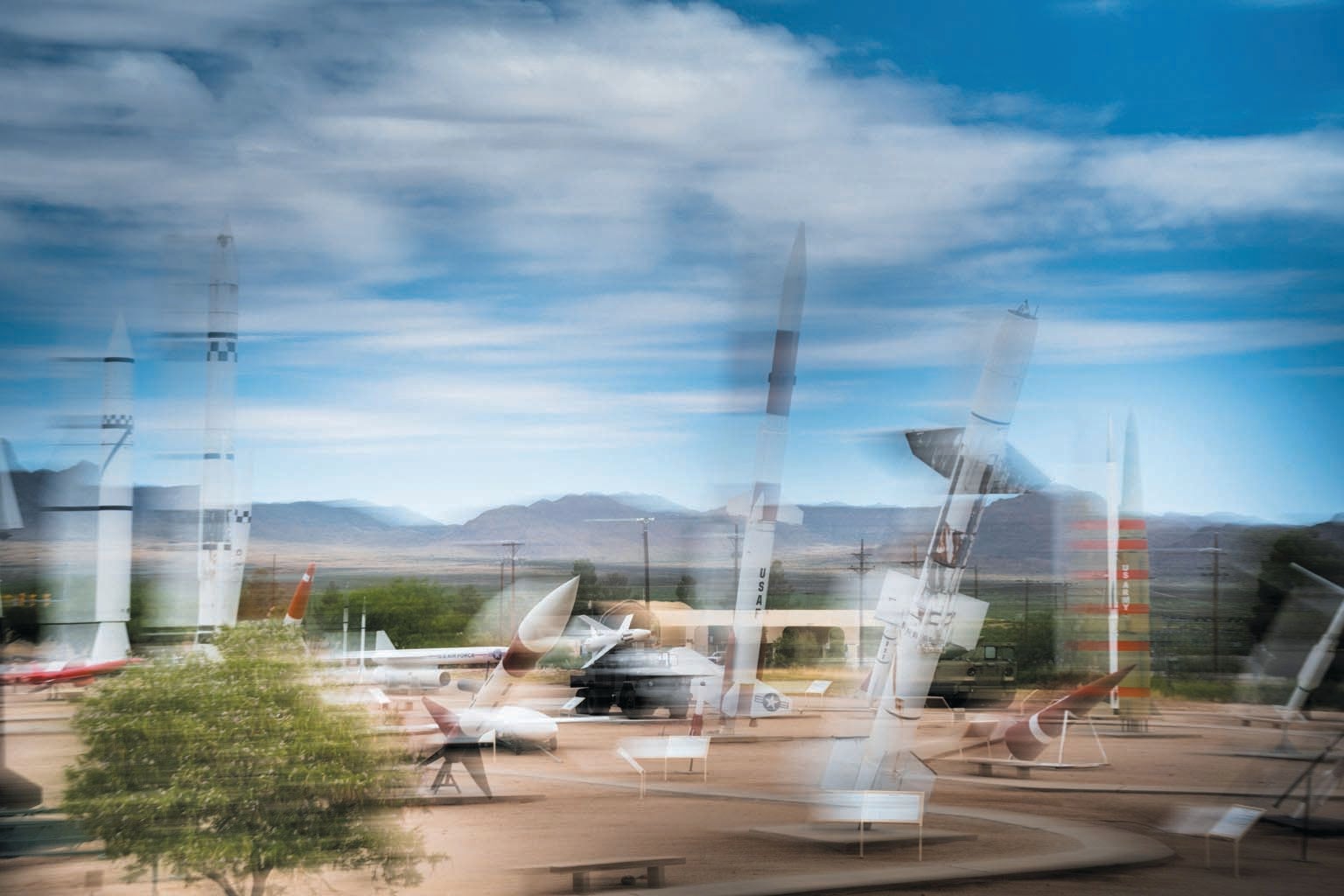
It wasn't until 1992 that Congress passed a bill, the Land Withdrawal Act, that gave WIPP space to operate. Seven years later the mine started storing transuranic waste from weapons production. The waste arrives inside cylindrical steel containers holding 55-gallon drums full of contaminated gloves, rags and protective booties, as well as the cement plugs that encase what was once liquid plutonium. The vessels are driven on tractor trailers from Los Alamos or other sites in the nationwide nuclear complex, past the scars of old uranium mines and down toward the southern desert, where Oppenheimer and his colleagues tested the world's first nuclear bomb in 1945.
WIPP sits amid oak and cactus in a great flat; air shafts rise out of the ground, funneling oxygen into the mine below. At a warehouse the drums are removed from the steel containers and loaded onto a forklift, then sent down an old freight elevator. The elevator descends to a network of mine-shaft access areas known as panels. Each panel contains seven rooms; they are lined with bolted metal fencing to keep small pieces of salt from falling in too quickly. Here the waste goes to sit and await the glinting salt. Eventually the fencing will fall inward.
Down in the salt, miners wear powerful headlamps and helmets while driving around in open vehicles and stand on lifts while bolting in new fencing. In the elevator shaft, people talk about bass fishing. Up on the surface, WIPP is a busy place on account of a massive, $500-million construction project to build two new structures—one that filters salt out of the air coming from a shaft below and one equipped with an advanced filtration system that can treat any unintended radiological releases from underground.
During a tour of the construction in August, communications officials made oblique references to “the events” that had necessitated this new ventilation system: a vehicle fire and then a radiological release, both in 2014. The latter event was caused by a compromised drum that had been improperly sealed at Los Alamos. In advance of my visit, one of the communications officials was careful to emphasize that, despite the large new buildings I'd see, WIPP is not expanding. The official line is that the facility is updating its infrastructure and moving toward filling up its congressionally mandated space.
But opponents of nuclear weapons modernization point out that WIPP and Los Alamos are inextricably linked because the production of new warheads requires a repository for waste products. For much of the past year WIPP was negotiating with the state over a renewal permit allowing it to construct two more long-planned panels. On the tour, Ken Harrawood, president of SIMCO, the contractor managing WIPP, pointed me toward a map of the facility and said, “We are not expanding the scope, but we are in fact expanding the footprint.”
“No, we are not expanding the footprint,” said our guide, a DOE spokesperson.
“Yeah, we are,” Harrawood replied. “We are adding panels in the mine to receive the same amount of waste that's always been approved.”
The absurdity of this moment cut to the quick of America's nuclear project. The weapons complex is spread through multiple bureaucracies; each one is responsible only for its own discrete tasks and relies on language that can be gymnastic. The officials who manufacture warheads often use less aggressive phrases such as “modernization program” to refer to new investments in the triad; those responsible for cleanup suggest reliability, even in the face of incontrovertible “events”; those overseeing the missiles call them “children.”
In 1987 feminist scholar Carol Cohn published a classic academic essay, “Sex and Death in the Rational World of Defense Intellectuals,” examining the curious rhetoric of the nuclear weapons complex. Cohn interrogated the obvious phallic imagery of the missile—“If disarmament is emasculation, how could any real man even consider it?”—but also the more subtle linguistic obfuscations that, she theorized, frame the existence of nuclear weapons as at once beneficial, inevitable and controllable. This animating political logic drives the project's forward momentum. “The old cold war never really ended institutionally,” says Zia Mian, co-director of Princeton University's Program on Science and Global Security. “The core structures remain exactly the same.”
In October, New Mexico approved WIPP's permit for the new panels, with conditions: the facility must prioritize legacy waste over new plutonium, and should Congress dictate an expansion of the mine's intake, the state will immediately begin the process of closing WIPP down. But Kenney, the New Mexico Environment Department secretary, ultimately wants WIPP to remain open. “Is it safe for the pueblos around LANL and the city of Santa Fe to have that waste remain at Los Alamos?” he asks. “I don't think so.”
“This is a really, really important project for the nation,” Harrawood says. That project requires workers, and recruitment is a challenge given the easy availability of high-paying oil jobs. The DOE has invested nearly $12 million in job-training curricula for radiological workers at nearby Southeast New Mexico College. According to David Porter, an Idaho contractor and nuclear industry veteran who designed some of the programs, students can pay $5,000 and emerge from a four-month radiological control technician course with a strong likelihood of a job at WIPP or Los Alamos. To maximize the efficiency of the training, Porter has stripped out ancillary lessons. “We don't do English, sociology or psychology. It's all just the industry,” he says. “Folks graduate on Friday, and they go to work Monday.” It is a vertically integrated nuclear employment system, allowing applicants to choose whether they wish to handle America's plutonium at its cradle or at its grave.
TULAROSA AND TRINITY TEST SITE, SOUTHERN NEW MEXICO—Spend 40 minutes at the Bradbury Science Museum in Los Alamos, and you can watch a plutonium bomb detonate on repeat. Inside the museum, which commemorates the atomic age, footage loops of the Trinity test, the 1945 explosion in southern New Mexico that marked the world's first nuclear detonation and preceded the bombings of Hiroshima and Nagasaki. In a darkened theater, the detonation of the so-called gadget is blinding. The light fills the room; the light takes away everything.
The Bradbury Museum refers to the Trinity test site as remote. If you spend time in rural parts of the country, this is a characterization you encounter often: places lacking human density are remote, a word that implies vacancy. But remoteness depends on your center.
Tularosa, or Tulie, as it's locally known, is a town of about 2,500 people on the desert floor at the foot of the Sacramento Mountains, about a four-hour drive south from Los Alamos. The region was settled in the 1860s by Spanish settlers who warred with the area's original stewards, the Mescalero Apache, who still live nearby. The settlers developed ranches here, attended mass at an old mission church, and served in the U.S. military. In 1945, when Oppenheimer's gadget blew up about 60 miles to the northwest, Tularosa residents reported being knocked to the ground.
Soon scientists at Lawrence Livermore National Laboratory will begin using El Capitan: a supercomputer billed as the strongest in the world, which will “facilitate regular use of high-resolution 3-D simulations of W87-1 warhead in operation.” In other words, El Capitan will perform nuclear weapon tests virtually so they do not need to be done in the physical world. “You would never go back to aboveground testing,” Webster of Los Alamos says. “We had to stop that. There was too much fallout.”
Mary Martinez White grew up in Tularosa in the 1950s and 1960s. Her father worked at Holloman Air Force Base near Alamogordo, ordering supplies for daily operations. At the time of the Trinity test, he and White's mother were living in Carrizozo, a railroad town that is even closer to the explosion site. He was proud of his work, and he died of leukemia. When White was 10, her brother's friend, who was 27, died of leukemia. White's mother and sister died of cancer; three other siblings have survived cancer.
“Downwinders,” as they are called, in Nevada, Utah and Arizona who suffered negative health impacts from cold war–era nuclear weapons tests performed at the Nevada Test Site have long been eligible for financial support. But such benefits have never been extended to New Mexicans affected by the Trinity test.
White has long advocated for Congress to do so. “New Mexico was predominantly people of color,” White says. “Mescaleros, Mexican Americans. We didn't have running water. We were a dispensable, disposable population.” Still, she describes her family as patriotic. She lost a nephew who served in the U.S. Army Special Forces in the Iraq War. “It's unnerving to think the government is not acknowledging you when they're looking to you for so much,” she says.
Earlier this year, in the wake of Christopher Nolan's movie Oppenheimer, the U.S. Senate passed a measure that could offer New Mexicans who developed cancers after being exposed to radiation from the Trinity test $150,000 and medical bill coverage. The bill would also extend support to Navajo uranium miners who have been excluded from downwinder benefits. The measure is tied up in a larger defense-spending package, but White seems cautiously optimistic. “We are closer than we have ever been before, but we know how much we still have to lose,” she says. White is especially frustrated by the investment of federal dollars in job-training programs to recruit young people from communities like hers. “The first weapons were tested on us,” she says, “and now our kids are funneled into it.”
Has she ever visited the Trinity test site?
“No,” she says. She has no desire to go. She's been there all her life.
North of Tularosa, the highway intersects another road at Carrizozo. Left past the sharp black volcanic formations, the land starts to roll. There is sotol and sage and wispy grasses. Near Bingham a turnoff heads back to the south, past signs advertising Trinitite—the eerie green glasslike rock that the Trinity test created when the reaction melted the sand. I turned down that dirt road and drove to a rise from which I could see the sculpted ridge of the Oscura Mountains to the southeast and the San Andres Mountains to the southwest. Down the valley, way in the distance, a blue peak gathered a raincloud. In the center of everything was a sprawling flat where, 78 years ago, an explosion turned the sky white.
If you didn't know what you were looking at, you might think of it as empty—a canvas, a place to reshape in one's own image. That's what certain Americans have done for generations in these wide-open spaces, out of malice or naivete or hope. We rush forward; we cannot imagine the past collecting its due. Heat shimmered on the still land. Then the wind picked up.
With reporting by Nina Berman.
